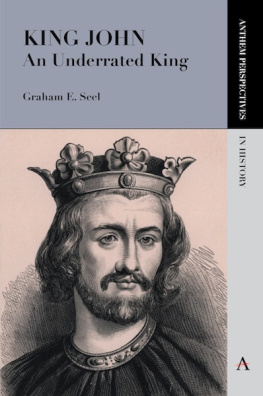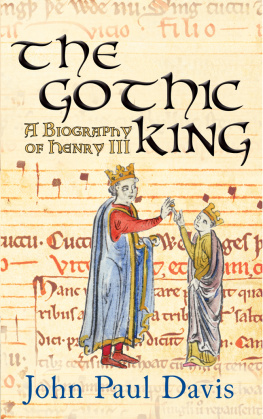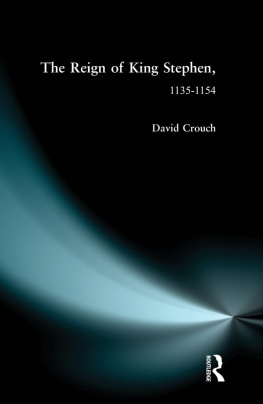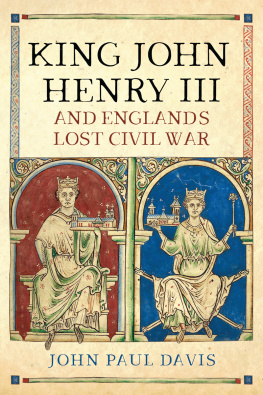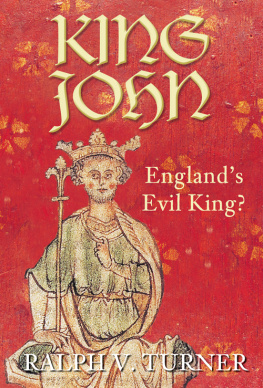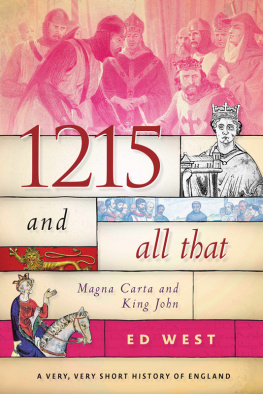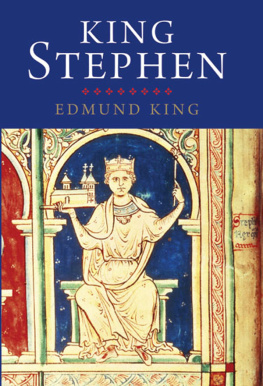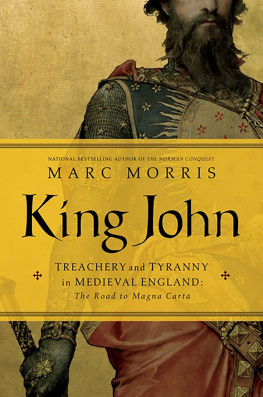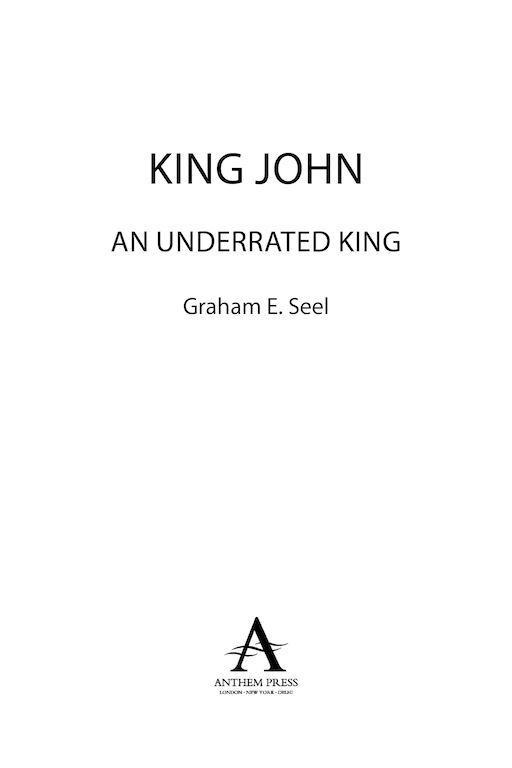Table of Contents
Anthem Press
An imprint of Wimbledon Publishing Company
www.anthempress.com
This edition first published in UK and USA 2012
by ANTHEM PRESS
75-76 Blackfriars Road, London SE1 8HA, UK
or PO Box 9779, London SW19 7ZG, UK
and
244 Madison Ave. #116, New York, NY 10016, USA
Copyright Graham Seel 2012
The author asserts the moral right to be identified as the author of this work.
Cover image Portrait of King John of England Getty Images
Credit: Photos.com
All rights reserved. Without limiting the rights under copyright reserved above,
no part of this publication may be reproduced, stored or introduced into
a retrieval system, or transmitted, in any form or by any means
(electronic, mechanical, photocopying, recording or otherwise),
without the prior written permission of both the copyright
owner and the above publisher of this book.
British Library Cataloguing-in-Publication Data
A catalogue record for this book is available from the British Library.
Library of Congress Cataloging-in-Publication Data
King John : an underrated king / Graham E. Seel.
p. cm.
Includes bibliographical references and index.
ISBN 978-0-85728-518-8 (pbk. : alk. paper)
1. John, King of England, 11671216. 2. Great BritainHistoryJohn, 11991216.
3. Great BritainKings and rulersBiography. I. Title.
DA208.S44 2012
942.033092dc23
[B]
2012015547
ISBN-13: 978 0 85728 518 8 (Pbk)
ISBN-10: 0 85728 518 1 (Pbk)
This title is also available as an eBook.
This ebook was produced with http://pressbooks.com.
Anthem Perspectives in History
Titles in the Anthem Perspectives in History series combine a thematic overview with analyses of key areas, topics or personalities in history. The series is targeted at high-achieving pupils taking A-Level, International Baccalaureate and Advanced Placement examinations, first year undergraduates, and an intellectually curious audience.
Series Editors
Helen Pike Director of Studies at the Royal Grammar School,
Guildford, UK
Suzanne Mackenzie Teacher of History at St Pauls School,
London, UK
Other Titles in the Series
Britain in India, 18581947
Lionel Knight
Disraeli and the Art of Victorian Politics
Ian St John
Gladstone and the Logic of Victorian Politics
Ian St John
For my sixth form classes at the Grammar School at Leeds, 20062012
Acknowledgements
A book of this nature is necessarily a collaborative effort. It has been a pleasure to work with Helen Pike, Janka Romero and Rob Reddick at Anthem Press. As the bibliography makes clear, this book rests upon the work of many scholars. I am especially grateful to the following, all of whom either responded to questions of technical detail or read the work and made valuable suggestions as to how it might be strengthened or both: Matthew Strickland; Robert Bartlett; Emilia Jamroziak; David Kirby and Mike Dickenson. David Smith read the book at all its stages, sometimes several times, and his felicitous eye for detail has saved me from many errors of that nature. I owe a particular debt of gratitude to Mark Bailey for introducing me to this project and thereafter, despite his busy schedule, finding time consistently to provide me with support, advice and warm encouragement. He has made me feel like a true medievalist even though the truth may be otherwise. Finally, thanks are due to the sixth form historians at the Grammar School at Leeds for suffering patiently, though not uncritically, my enthusiasm for King John and who, by means of their questions and ideas, have given me much food-for-thought. It is as an attempt to redress the balance and give them something in return that I therefore happily dedicate this work to them. As is usual with a work of this nature, I acknowledge that I am entirely responsible for any errors that might be found within.
Graham E. Seel, Snape, Lower Wensleydale
May 2012
List of Figures
Figure 1 The Angevin family tree
Figure 2 Map of the Angevin empire at the time of Johns accession
Figure 3 The continental territories of the Angevins at the time of Johns birth (courtesy of Yale University Press)
Figure 4 Preliminary moves in the war of succession, April to September 1199 (courtesy of Yale University Press)
Figure 5 Johns itinerary through his French dominions in the summer of 1200 (courtesy of Yale University Press)
Figure 6 War with France phase 1, spring to autumn 1202 (courtesy of Yale University Press)
Figure 7 War with France phase 2, autumn 1202 to December 1203 (courtesy of Yale University Press)
Figure 8 War with France phase 3, summer 1204 (courtesy of Yale University Press)
Figure 9 The expedition of 1206 (courtesy of Yale University Press)
Figure 10 The Bouvines campaign, 1214 (courtesy of Yale University Press)
Figure 11 The arrangement of forces at the Battle of Bouvines, 1214
Figure 12 Anglo-Norman Ireland and its neighbours at the time of King John
Figure 13 Diagrammatic representation of the legal system under John
Figure 14 Areas of Royal Forest in England in the early thirteenth century (courtesy of Yale University Press)
Figure 15 Johns itinerary during the civil war, 1215 to March 1216 (courtesy of Yale University Press)
Every effort has been made to trace holders of copyright material. The author would be grateful to hear from any such holders who have not been contacted.
Chapter 1: Outline of the Reign
A) An Outline of the Reign of King John, 11991216
Foul as it is, Hell itself is defouled by the foulness of John.
Matthew Paris, Chronica Majora, composed 123559
Born in Oxford on Christmas Eve in 1167, John was the youngest son of Henry II and Eleanor of Aquitaine. With three significantly older brothers, Johns prospects of becoming king were remote (see Figure 1, page 2). Indeed, for a time it seemed he would be denied any meaningful inheritance, thereby earning the epithet John Lackland. Nonetheless, chance events meant that gradually the path to the Crown became shorter and straighter: Johns eldest brother Henry died in 1183, followed by Geoffrey in 1186; then, upon the demise of his remaining brother, Richard the Lionheart in 1199, John became king.
Johns inheritance as king was substantial. His father and Richard had governed not only England, but also Normandy and, in addition though sometimes in name more than in reality territory covering in total roughly one third of the area of modern France, from Poitou in the north to Gascony in the south. Some historians have referred to this cross-Channel dominion as the Angevin empire (see Figure 2, page 3; and page 27).
Johns reign had a number of phases, each shaped and defined in particular by foreign policy. The initial phase can be perceived as existing from 1199 to 1203, years in which John fought to secure his inheritance. Arthur, son of Geoffrey and his wife Constance of Brittany, contested Johns claim to the Angevin empire. Born in 1187 and designated by Richard in the Treaty of Messina in 1191 as heir to all the Angevin lands, Arthur was one of the many kings England almost but never had. Having gained the backing of the French king, Philip Augustus, Arthur put himself at the head of a rebellion directed against the claims of his uncle. He disappears from the pages of

